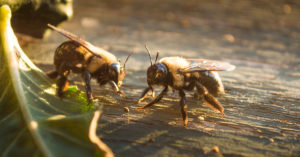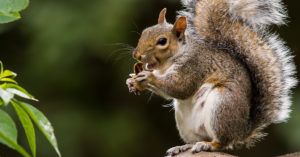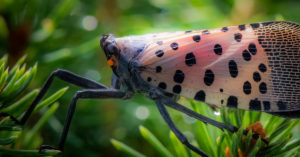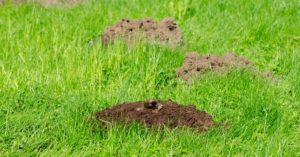 One of the summer’s lazy pleasures is watching bees buzzing in your yard, going about their business. Not so pleasurable is finding out that some of these busy bees are busy damaging your home.
One of the summer’s lazy pleasures is watching bees buzzing in your yard, going about their business. Not so pleasurable is finding out that some of these busy bees are busy damaging your home.
Carpenter bees are a common summertime sight on Eastern Long Island and sometimes a significant headache for homeowners. These destructive pests can do a shocking amount of damage to your home and other wood structures. [Read more…]

 Squirrels are the most visible rodent on Long Island and arguably,
Squirrels are the most visible rodent on Long Island and arguably,  Every spring, homeowners wonder, what is the best defense against pests? It can seem daunting, but the good news is that a few steps, which also provide additional benefits, will help prevent pests from infesting your home and property.
Every spring, homeowners wonder, what is the best defense against pests? It can seem daunting, but the good news is that a few steps, which also provide additional benefits, will help prevent pests from infesting your home and property. April showers may bring May flowers, but spring rains also bring unwanted visitors into our yards and homes. Insects can cause issues at any time of the year, but you may notice significantly more flying or crawling pests when it rains.
April showers may bring May flowers, but spring rains also bring unwanted visitors into our yards and homes. Insects can cause issues at any time of the year, but you may notice significantly more flying or crawling pests when it rains.  Spotted lanternflies, sometimes also referred to as lanternflies, are an invasive species that arrived in the United States a few years ago. Since they have no natural predators on this continent, spotted lanternflies have swept across Pennsylvania, spread down to Maryland, and now are present in New York, including Long Island. This past fall, the spotted lanternfly report from the
Spotted lanternflies, sometimes also referred to as lanternflies, are an invasive species that arrived in the United States a few years ago. Since they have no natural predators on this continent, spotted lanternflies have swept across Pennsylvania, spread down to Maryland, and now are present in New York, including Long Island. This past fall, the spotted lanternfly report from the  Moles are one of the many creatures which, in small numbers, can be helpful to a property but, in large numbers, are pests to be eradicated. A small mammal that lives underground, moles are exceptionally efficient diggers who can help aerate your soil or quickly destroy your lawn. These furry insectivores burrow 15 to 18 feet an hour, a noteworthy feat for a creature that measures about 10 inches when fully grown. While they can be helpful, it is better to get rid of moles than let them take over and destroy your lawn.
Moles are one of the many creatures which, in small numbers, can be helpful to a property but, in large numbers, are pests to be eradicated. A small mammal that lives underground, moles are exceptionally efficient diggers who can help aerate your soil or quickly destroy your lawn. These furry insectivores burrow 15 to 18 feet an hour, a noteworthy feat for a creature that measures about 10 inches when fully grown. While they can be helpful, it is better to get rid of moles than let them take over and destroy your lawn.
